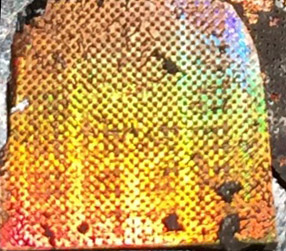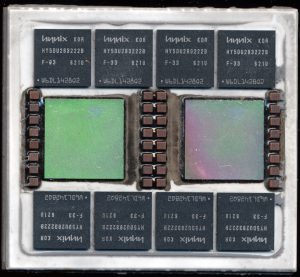Processors to Emulate Processors: The Palladium II
Several years ago we posted an unusual MCM that’s purpose was a mystery. It was clearly made by IBM and clearly high end. While researching another mystery IBM MCM both of their identities came to light. The original MCM is an emulation processor from a Cadence Palladium Emulator/Accelerator system.
In the 1990’s IBM had been working on technology to make emulating hardware/software designs more efficient as such designs got more complicated. At the time it was most common to emulate a system in an FPGA for testing, but as designs grew more complex this became a slower and slower process. IBM developed the idea of an emulation processor. This was to be known as CoBALT (Concurrent Broadcast Array Logic Technology). It was licensed to a company called QuickTurn in 1996. At its heart the QuickTurn CoBALT was a massively parallel array of boolean logic processors. Boolean processors are similar to a normal processor

Here is a flipped (and very rough) die from a Palladium II. You can make out the very repeating design of the 768 boolean processors.
but only handle boolean data, logic functions such as AND, OR, XOR, etc. Perhaps the most well known, is the boolean sub-processor that Intel built into the 8051, it excelled at bit manipulation. The same applies for the emulation processors in CoBALT. Each boolean processor has at its heart a LUT (Look Up Table), with 8-bits to encode the logic function (resulting in 256 possible logic function outputs) and the 3 gate inputs serving as an index into the LUT, as well as the associated control logic, networking logic, etc.
A target design is compiled and emulated by the CoBALT system. The compiling is the tricky part, the entire design is broken down into 3-input logic gates, allowing the emulator to emulate any design. Each processor element can handle one logic function, or act as a memory cell (as many designs obviously include memory). The CoBALT had 65 processors per chip, and 65 chips per board, with a system supporting up to 8 boards. This 33,280 processor system could compile 2 Million gates/Hour. The CoBALT plus sped this up a bit and supported 16 boards, doubling capacity and added on board memory.
Posted in:
CPU of the Day


